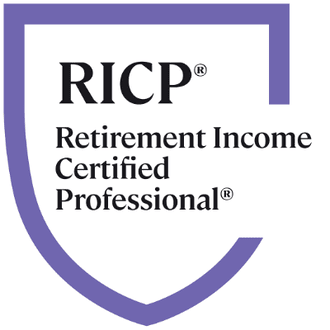
The Benefits and Drawbacks of DROP Pensions for Public Sector Workers
Introduction
In the realm of public sector employment, retirement planning often takes center stage. As public servants dedicate their careers to serving their communities, securing a stable financial future is a top priority. Deferred Retirement Option Plans (DROP) have emerged as a popular and effective tool, providing public sector workers with a unique approach to retirement. This blog post will explore how a DROP works and the specific advantages of DROP pensions tailored for public sector employees.
Here’s how a DROP pension typically works:
1. Eligibility and Enrollment: Employees become eligible for DROP pensions after completing a certain number of years of service or upon reaching a specific age, as defined by the employer or the pension plan. Once eligible, employees can choose to participate in the DROP program.
2. Official Retirement Status: When an employee decides to enter the DROP program, they are considered officially retired for the purpose of pension calculations, even though they continue working. At this point, the normal pension benefit they would receive upon retirement is frozen. This means that any salary increases or changes in years of service after entering DROP do not impact the pension calculation.
3. Accumulation of Pension Benefits: During the period of participation in DROP (which typically lasts for a predetermined number of years, often ranging from 3 to 5), the pension benefits the employee would normally receive are not paid out immediately. Instead, these benefits are deposited into a separate account, often an interest-bearing one. The funds in this account accumulate over the DROP period.
4. Continued Employment: The employee continues working in their regular position, earning their salary, and participating in the employee benefits programs. While working, the employee’s pension benefits accumulate in the DROP account.
5. Investment and Interest: The funds in the DROP account may be invested, and they often earn interest at a rate higher than that of a standard savings account. The exact interest rates and investment options depend on the rules of the specific DROP program. Investment options and interest rates vary with the plan.
6. Distribution Options: At the end of the DROP period, employees have several options for receiving the accumulated funds. Common options include receiving the funds as a lump sum payment, an annuity, or a combination of both. Some DROP programs may allow employees to roll the funds into an Individual Retirement Account (IRA) or another qualified retirement plan.
7. Post-DROP Retirement: After the completion of the DROP period, the employee typically retires officially. At this point, they start receiving pension benefits from the funds accumulated in the DROP account and any other retirement benefits they may be entitled to.
It’s important to note that the specific rules and regulations regarding DROP pensions can vary widely based on the employer and the retirement system in place.
DROP pensions have their advantages and disadvantages. Let’s explore the pros and cons of DROP pensions:
Pros:
-
Financial Security: DROP pensions provide a stable source of retirement income. The funds accumulate during the DROP period, offering a guaranteed pension payout upon retirement, which can enhance financial security during retirement.
-
Higher Interest Rates: DROP accounts often earn higher interest rates than standard savings accounts, enabling faster growth of retirement funds and potentially resulting in a larger nest egg upon retirement.
-
Flexibility: Participants have the flexibility to manage their investments actively. They can choose from different investment options, allowing for tailored financial planning to meet specific needs and goals.
-
Continued Employment: Employees can continue working and earning a salary while their pension benefits grow, ensuring a seamless transition into retirement and maintaining financial stability.
-
Survivor Benefits: DROP pensions typically offer survivor benefits, ensuring that spouses or dependents receive financial support in the event of the participant’s death.
-
Attracting and Retaining Talent: DROP pensions can be an attractive incentive for recruiting and retaining experienced employees, especially in professions where expertise and experience are crucial, such as public safety jobs.
Cons:
-
Limited Duration: DROP participation is limited to a specific period, usually ranging from 3 to 5 years. Once this period ends, the participant must retire and start receiving pension benefits, which may not be ideal for those who wish to work longer.
-
Potential Lower Pension Payments: Depending on the specific rules of the DROP program, participants might receive slightly lower monthly pension payments upon retirement because the pension calculation is often frozen during the DROP period.
-
Complexity: DROP pensions can be complex, involving various rules and regulations. Participants need to understand the terms thoroughly to make informed decisions, which might require professional financial advice.
-
Market Risks: If the investments chosen by the participant perform poorly, the growth of funds in the DROP account might not meet the expectations, potentially impacting the retirement income.
-
Tax Implications: There can be tax implications associated with DROP pensions, especially if participants choose to receive a lump sum payment. It’s essential to understand the tax consequences and plan accordingly. You should talk to a financial advisor before making a lump sum decision.
-
Loss of Pension Flexibility: Once enrolled in DROP, participants might lose certain options available in the traditional pension plan, such as the ability to choose different payment options or beneficiaries.
In summary, DROP pensions offer valuable benefits, such as financial security, flexibility, and survivor benefits. However, participants must carefully consider the limitations and potential drawbacks before opting for a DROP program, making well-informed decisions based on their individual financial goals and circumstances. Consulting with a financial planner can be instrumental in navigating the complexities of DROP pensions and ensuring a secure retirement. Contact me below if you want to learn more about how DROP pensions fit into your retirement goals.
*This content is developed from sources believed to be providing accurate information. The information provided is not written or intended as tax or legal advice and may not be relied on to avoid any Federal Government tax penalties. Individuals are encouraged to seek advice from their own tax or legal counsel. Individuals involved in the estate planning process should work with an estate planning team, including personal legal or tax counsel. Neither the information presented nor any opinion expressed constitutes a representation of a specific investment or the purchase or sale of any securities. Asset allocation and diversification do not ensure a profit or protect against loss in declining markets.





